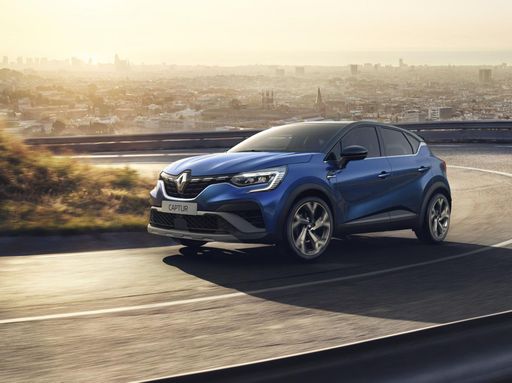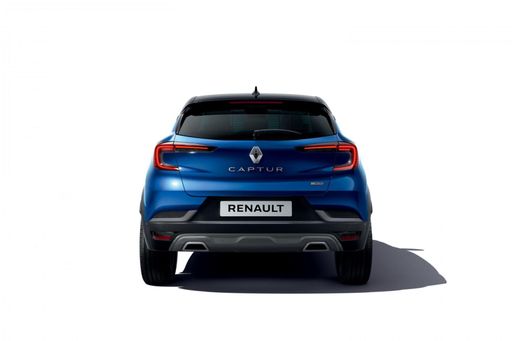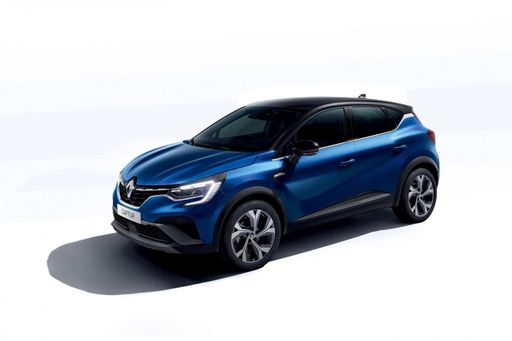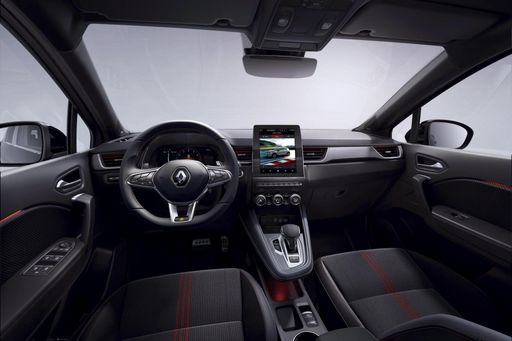In the realm of compact SUVs, the Renault Captur and Volvo EX30 stand out as two compelling choices for different reasons. While the Captur appeals with its versatile engine options and practicality, the EX30 showcases the latest in electric vehicle technology and performance. Let’s dive deeper into this comparison, exploring their technical aspects and innovative features.
Renault Captur vs Volvo EX30 – Performance, range & efficiency compared
Everyday use, family trips or long-distance drives – here’s where the differences show.
Discover whether Renault Captur or Volvo EX30 fits your lifestyle better.
Powertrain and Performance
The Renault Captur offers a diverse range of powertrains, including full hybrid, petrol mild-hybrid, LPG, and petrol engines, providing flexibility for various driving preferences. The Captur's engines generate between 91 HP and 158 HP, with the most powerful variant reaching a top speed of 180 km/h. Acceleration from 0 to 100 km/h ranges from a respectable 8.5 seconds to a more leisurely 14.3 seconds, dependent on the engine choice.
On the other hand, the Volvo EX30 is positioned as a fully electric SUV, which marks a significant shift toward sustainable mobility. With power outputs ranging from 272 HP to a staggering 428 HP, the EX30 offers exhilarating performance, achieving 0 to 100 km/h in as little as 3.6 seconds for its top variant. The top speed is capped at 180 km/h, delivering a sporty driving experience paired with the instant torque characteristic of electric vehicles.
Battery Capacity and Range
The Renault Captur features a small battery capacity of only 0.6 kWh, focusing more on traditional fuels rather than electrification. Fuel consumption is relatively efficient for an SUV, with figures ranging from 4.7 to 7.8 L/100 km, translating to CO2 emissions of 106 to 139 g/km. The petrol variants also offer respectable trunk capacity between 326 and 422 liters, ideal for daily use.
In stark contrast, the EX30 boasts battery capacities of either 49 kWh or 65 kWh, providing electric ranges from 339 km to an impressive 476 km on a single charge. This exceptional range makes the EX30 suitable for both urban commuting and longer trips, appealing to eco-conscious consumers looking for practicality without sacrificing performance.
Interior and Cargo Space
Both the Captur and EX30 comfortably seat five passengers and share a similar focus on interior practicality. The Captur's trunk capacity of 326 to 422 liters offers ample space for luggage, making it a highly practical choice for families. The cabin is designed with comfort and functionality in mind, incorporating high-quality materials and innovative technology.
The EX30, while slightly more compact at 318 liters for trunk space, compensates with a modern and advanced interior aesthetic. Volvo's commitment to sustainability is evident through the use of recycled materials, enhancing the interior while minimizing environmental impact. The tech-savvy dashboard includes the latest infotainment systems and safety features synonymous with the Volvo brand.
Innovative Features and Technology
The Renault Captur comes equipped with a range of technological amenities, including a user-friendly infotainment system, connectivity options, and advanced driver assistance systems. Its compact SUV design is tailored to urban environments, providing maneuverability without sacrificing comfort or safety.
In comparison, the Volvo EX30 represents the forefront of electric vehicle technology. It offers advanced features such as a sophisticated driver-assist package, over-the-air software updates, and a fully digital instrument cluster that enhances the driving experience. Notably, the EX30's efficient energy consumption of approximately 17 to 18.7 kWh/100 km allows for eco-friendly driving without compromising performance.
Conclusion
In summary, the Renault Captur and Volvo EX30 cater to distinct preferences within the compact SUV market. The Captur shines with its versatility in engine options, practicality, and value, making it an enticing choice for budget-conscious buyers. Meanwhile, the EX30 sets a benchmark for electric vehicles with its exceptional range, exhilarating performance, and innovative technology, appealing to those ready to embrace the future of driving. Ultimately, the choice between these two models hinges on individual priorities—whether it's efficiency and practicality or pioneering electric performance and sustainability.
Here’s where it gets real: The technical differences in detail
Costs and Efficiency:
Price and efficiency are often the first things buyers look at. Here it becomes clear which model has the long-term edge – whether at the pump, the plug, or in purchase price.
Renault Captur has a clearly advantage in terms of price – it starts at 21100 £, while the Volvo EX30 costs 33000 £. That’s a price difference of around 11863 £.
Engine and Performance:
Power, torque and acceleration say a lot about how a car feels on the road. This is where you see which model delivers more driving dynamics.
When it comes to engine power, the Volvo EX30 has a decisively edge – offering 428 HP compared to 143 HP. That’s roughly 285 HP more horsepower.
In acceleration from 0 to 100 km/h, the Volvo EX30 is significantly quicker – completing the sprint in 3.60 s, while the Renault Captur takes 8.90 s. That’s about 5.30 s faster.
There’s no difference in top speed – both reach 180 km/h.
There’s also a difference in torque: Volvo EX30 pulls convincingly stronger with 543 Nm compared to 265 Nm. That’s about 278 Nm difference.
Space and Everyday Use:
Cabin size, boot volume and payload all play a role in everyday practicality. Here, comfort and flexibility make the difference.
Both vehicles offer seating for 5 people.
In curb weight, Renault Captur is noticeable lighter – 1323 kg compared to 1840 kg. The difference is around 517 kg.
In terms of boot space, the Renault Captur offers clearly perceptible more room – 422 L compared to 318 L. That’s a difference of about 104 L.
In maximum load capacity, the Renault Captur performs clearly perceptible better – up to 1363 L, which is about 363 L more than the Volvo EX30.
When it comes to payload, Renault Captur slightly takes the win – 453 kg compared to 390 kg. That’s a difference of about 63 kg.
Who wins the race?
The Volvo EX30 proves to be is largely superior and therefore becomes our DriveDuel Champion!
Volvo EX30 is the better all-rounder in this comparison.
 @ Volvo Cars
@ Volvo Cars
Volvo EX30
Renault Captur
The Renault Captur is a cheeky little crossover that pairs city-friendly agility with a roomy, well-thought-out cabin and enough style to turn heads at the lights. It’s a sensible choice for buyers who want practical versatility and a dash of personality on their daily drives, without taking itself too seriously.
details @ Renault Group Media
@ Renault Group Media
 @ Renault Group Media
@ Renault Group Media
 @ Renault Group Media
@ Renault Group Media
 @ Renault Group Media
@ Renault Group Media
Volvo EX30
The Volvo EX30 arrives as a compact electric with crisp Scandinavian design and a cheeky personality, proving you can be serious about safety and still enjoy a grin on your commute. Its cabin is cleverly packaged and delightfully easy to live with, offering smart tech and practical touches that make it feel like a grown-up's city car with a sense of fun.
details @ Volvo Cars
@ Volvo Cars
 @ Volvo Cars
@ Volvo Cars
 @ Volvo Cars
@ Volvo Cars
 @ Volvo Cars
@ Volvo Cars
 @ Volvo Cars
@ Volvo Cars
 @ Renault Group Media
@ Renault Group Media
|
 @ Volvo Cars
@ Volvo Cars
|
|
|
|
Costs and Consumption |
|
|---|---|
|
Price
21100 - 28300 £
|
Price
33000 - 49100 £
|
|
Consumption L/100km
4.5 - 6 L
|
Consumption L/100km
-
|
|
Consumption kWh/100km
-
|
Consumption kWh/100km
17 - 18.7 kWh
|
|
Electric Range
-
|
Electric Range
339 - 476 km
|
|
Battery Capacity
-
|
Battery Capacity
49 - 65 kWh
|
|
co2
102 - 137 g/km
|
co2
0 g/km
|
|
Fuel tank capacity
48 L
|
Fuel tank capacity
-
|
Dimensions and Body |
|
|---|---|
|
Body Type
SUV
|
Body Type
SUV
|
|
Seats
5
|
Seats
5
|
|
Doors
5
|
Doors
5
|
|
Curb weight
1323 - 1514 kg
|
Curb weight
1840 - 1960 kg
|
|
Trunk capacity
326 - 422 L
|
Trunk capacity
318 L
|
|
Length
4239 mm
|
Length
4233 mm
|
|
Width
1797 mm
|
Width
1838 mm
|
|
Height
1575 mm
|
Height
1550 - 1567 mm
|
|
Max trunk capacity
1276 - 1363 L
|
Max trunk capacity
1000 L
|
|
Payload
376 - 453 kg
|
Payload
370 - 390 kg
|
Engine and Performance |
|
|---|---|
|
Engine Type
Full Hybrid, Petrol, Petrol MHEV
|
Engine Type
Electric
|
|
Transmission
Automatic, Manuel
|
Transmission
Automatic
|
|
Transmission Detail
Automatic Gearbox, Manual Gearbox, Dual-Clutch Automatic
|
Transmission Detail
Reduction Gearbox
|
|
Drive Type
Front-Wheel Drive
|
Drive Type
Rear-Wheel Drive, All-Wheel Drive
|
|
Power HP
115 - 143 HP
|
Power HP
272 - 428 HP
|
|
Acceleration 0-100km/h
8.9 - 12.3 s
|
Acceleration 0-100km/h
3.6 - 5.7 s
|
|
Max Speed
180 km/h
|
Max Speed
180 km/h
|
|
Torque
160 - 265 Nm
|
Torque
343 - 543 Nm
|
|
Number of Cylinders
3 - 4
|
Number of Cylinders
-
|
|
Power kW
84 - 116 kW
|
Power kW
200 - 315 kW
|
|
Engine capacity
1199 - 1789 cm3
|
Engine capacity
-
|
General |
|
|---|---|
|
Model Year
2025
|
Model Year
2024 - 2025
|
|
CO2 Efficiency Class
C, D, E
|
CO2 Efficiency Class
A
|
|
Brand
Renault
|
Brand
Volvo
|
What drive types are available for the Renault Captur?
The Renault Captur is offered with Front-Wheel Drive.
The prices and data displayed are estimates based on German list prices and may vary by country. This information is not legally binding.
